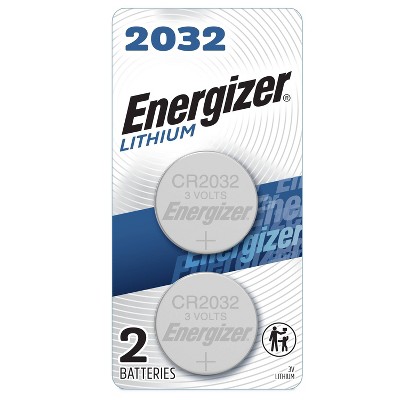Oh close, ethylene carbonate is the electrolyte and mangnese dioxide the cathode, last two digits is the thickness 3.2 mm. But I need more.
Commonly refered to as "coin lithium" batteries.
CR is a generic designation... much like AA and AAA for standard general purpose barrel batteries. "C" designates it as a Lithium cell in the ANSI standards, and R stands for round. Some companies, like Duracell will use a DL designator for the generic... to specify that as a branded generic (which is kind of an oxymoron.. so it's more about marketing).
20 is the diameter in mm, and is standard across manufacturers.
32 is the thickness in tenths of a millimeter, and is standard across manufacturers
As for specific internal compounds of a CR2032... while they are commonly called lithium batteries, they are in reality Lithium/Manganese Dioxide (Li/MnO2). The electrolyte can be one of several organic compounds (ethylene carbonate being the most common). The actual lithium content is ~ 0.1 grams (ie: 10% of total battery weight). They are like little hand grenades if you toss one into a fire... so don't ever do that, and don't ever toss them into the trash. Always dispose of them in a proper battery recycling facility.
The ANSI standard specification (IEC-CR2032) for this particular "coin battery" is 240 mAh (to 2.0 volts) (Rated at 15K ohms at 21°C), though in reality they are designed for low duty cycle pulse discharge applications. This makes them them perfect for keyfobs, digital thermometers, and similar low utilizations devices. They have an operating temperture range of -30C to +60C which exceeds normal consumer device operating temperatures.






